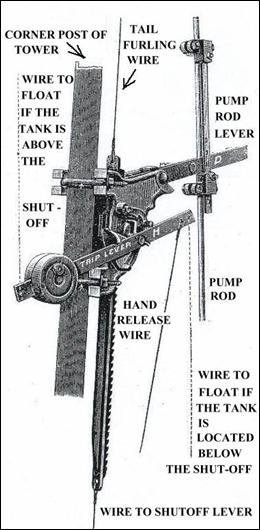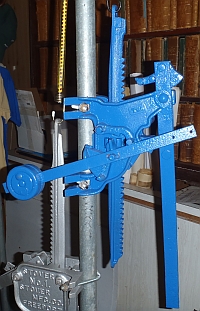



This ratchet type windmill regulator was patented in the USA on 7th July 1903 by John M. LOWE, and was made in two sizes. The No. 1 is for 10ft mills and smaller, and the No. 2 is for 12ft mills and bigger. The Morawa Museum has a restored example of each size.
The photo shows the No.1 regulator for 10ft mills and smaller. Also displayed on the same post underneath is a Stover No 1. automatic windmill regulator made by rival company Stover Mfg. Co. Method of operation is basically the same.
The Hoosier automatic windmill shutoff was fairly common in Australia in its original and other formats, as FLINT & WALLING also made these with plain castings to be supplied under contract for other windmill producers. John Danks & Son advertised them in their catalogues and W. D. Moore & Co also supplied them, as an agent for Danks.
The regulator was attached to a float in the tank of water. When the tank was full the regulator pulled the mill out of gear. When the water level in the tank dropped, the trip lever activated to release the pullout wire to the windmill tail, thus allowing the windmill to swing back into the wind and pump again.
This is a regulator that needs no attention and does its work to perfection. Quote from manufacturer. Some comments by users of the regulator are not so complimentary!